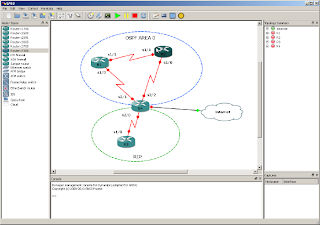

You may also need to install additional components as mentioned in the installation instructions. Even so the installation instructions are for Debian- and Ubuntu-based distributions, you can easily install it for Archlinux using AUR: So if you want to start with GNS3 you need to install at least the GUI locally. You are not running actual operating systems (such as Cisco IOS), but rather, a simulated device developed by GNS3, like the built-in layer 2 switch.

GNS3 consists of 2 components, the client or the graphical user interface (GUI) and the server to which the client connects to. GNS3 allows you to run a small topology consisting of only a few devices on your laptop, to those that have many devices hosted on multiple servers or even hosted in the cloud. So this course focuses on GNS3 but also mentions CLM.

If you don’t know David Bombal, I recommend to have a look at his Youtube Channel, where he discusses Python, Ethical Hacking, Networking, Network Automation, CCNA and Virtualization.
Gns3 network simulator images for free#
As part of this research, I stumbled over GNS3 and CLM, both tools to create virtual lab environments.Īctually, I was not aware of either GNS3 nor CLM until I started the course Linux for Network Engineers: Practical Linux with GNS3, one which was offered for free by David Bombal. As I am currently working on refreshing my networking skills and as I want to get deeper into network security, I was looking for some courses.


 0 kommentar(er)
0 kommentar(er)
